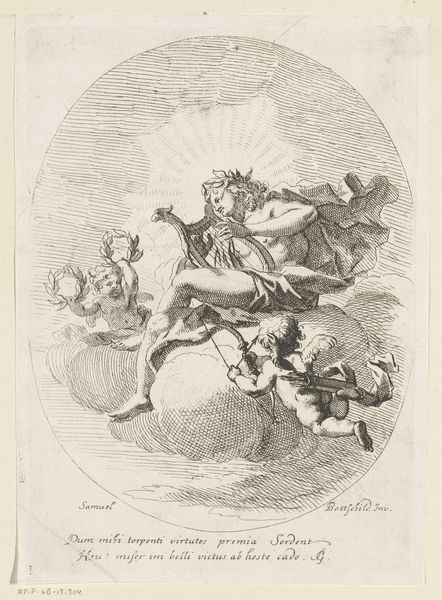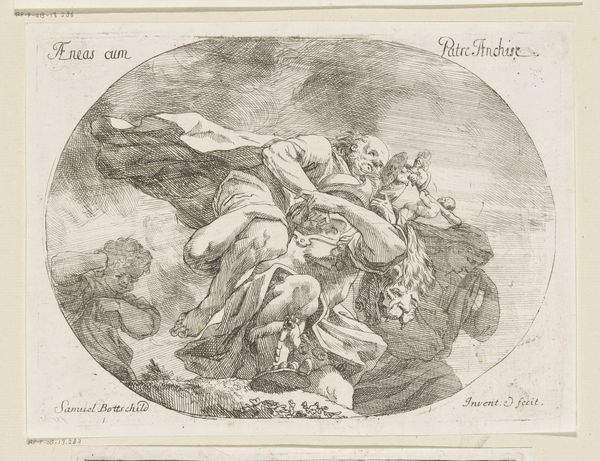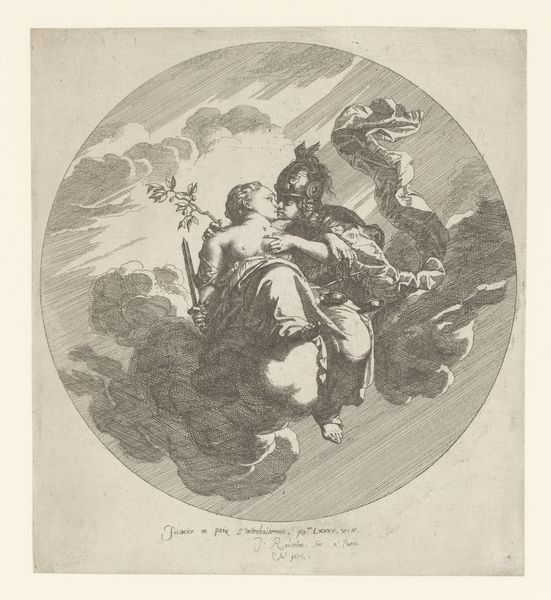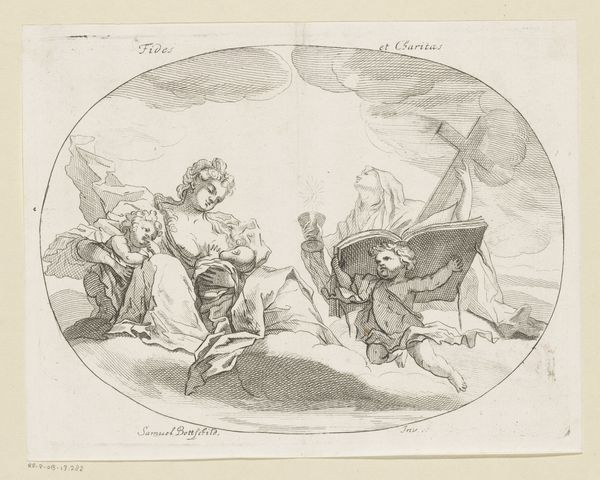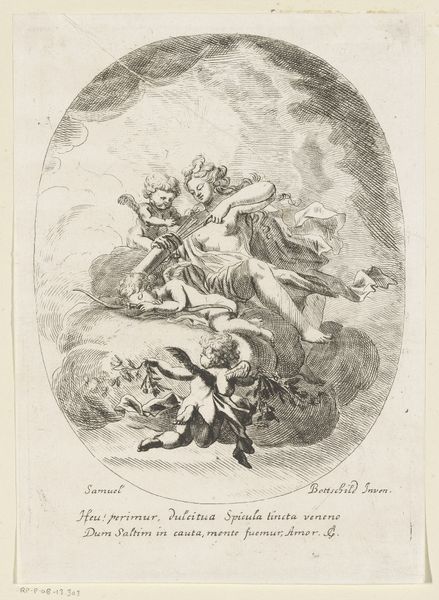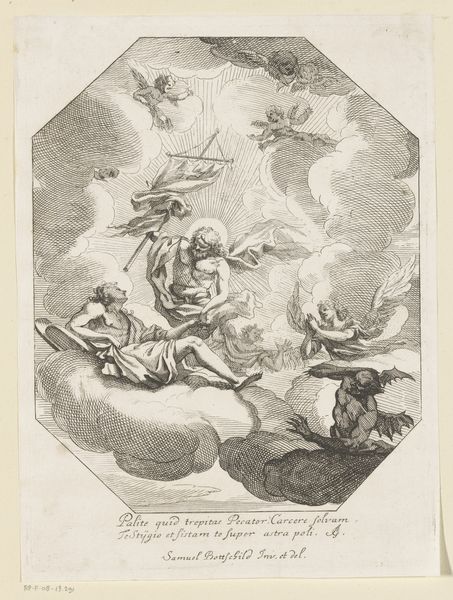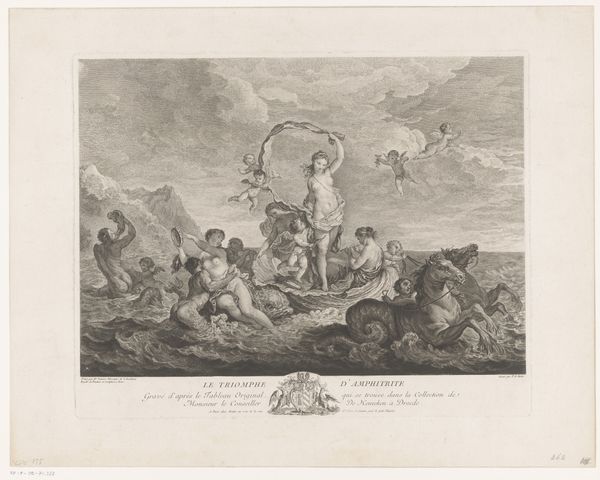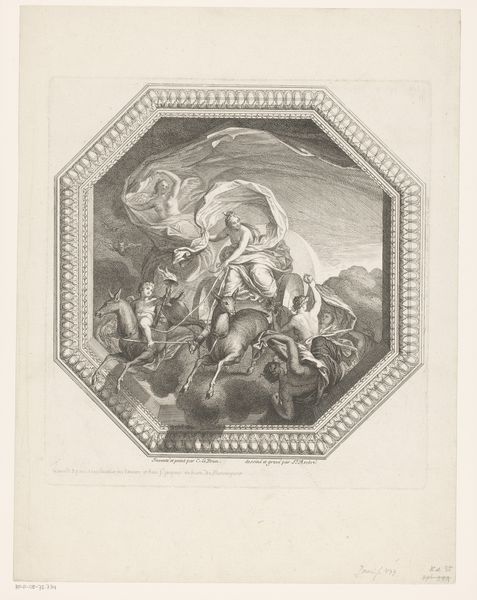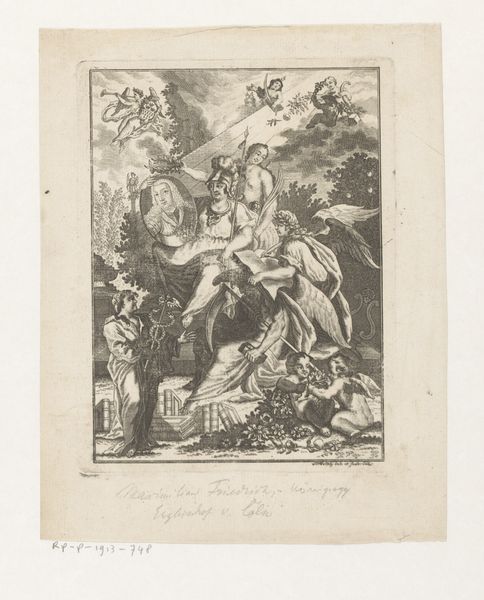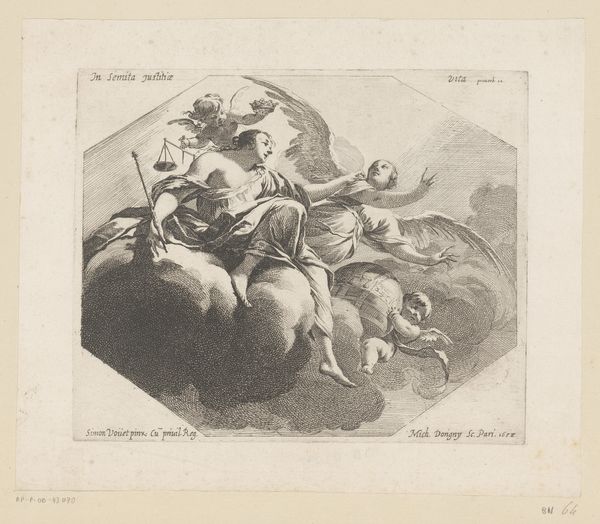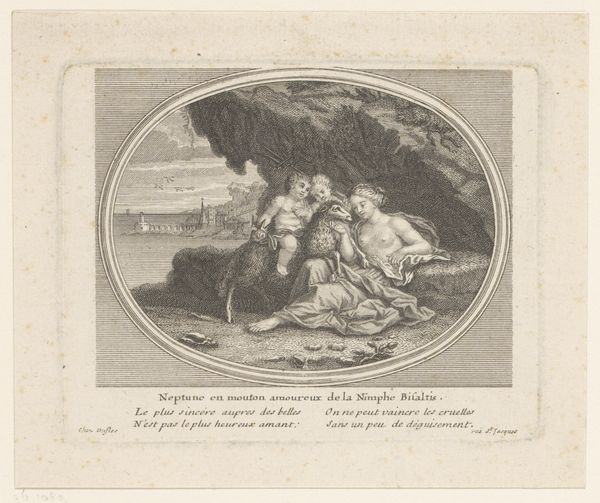
print, engraving
#
allegory
#
baroque
# print
#
figuration
#
engraving
Dimensions: height 264 mm, width 250 mm
Copyright: Rijks Museum: Open Domain
Curator: I see ethereal figures floating amidst swirling clouds—a vision in ink, almost baroque. Editor: Indeed. We are looking at “Bonitas (Goodness) and Fides (Faith),” an engraving created in 1693 by Samuel Bottschild. It is currently held in the collection of the Rijksmuseum. Curator: Bottschild is certainly capturing the allegorical traditions of the period. Do you think we can speak more about the nature of "Bonitas" or "Fides"? I feel in these symbols there is much cultural memory at work, Editor: Well, we can note the historical context here, such imagery was frequently used in the 17th and 18th centuries to communicate abstract concepts. Personifications of virtues or values—as we see with Goodness and Faith—served as visual tools to reinforce social order, religious devotion, and even political ideologies. Curator: Absolutely, this image presents an emotional promise of hope through goodness. I am struck by how the composition, enclosed within this circular frame, focuses our eye to two central figures touching with an unusual number of putti swirling in attendance. One almost gets the impression of floating amidst clouds. Editor: The inclusion of putti certainly adds a symbolic richness, and one might add, ideological reinforcement in their celebration of social bonds. Curator: Quite so! Bottschild uses symbols to illustrate his ideas and perhaps show cultural assumptions about feminine virtues during that time, and how it tied to concepts of political stability, religious devotion, or moral guidance. How interesting that these are also the same virtues we find in renaissance and even contemporary icons. Editor: Seeing how virtues or moral abstractions can take visual form in social and political art truly allows us to trace the political life of imagery through different contexts. Curator: Absolutely. Through his print we see this continuum as art—through all ages—shapes cultural values by using images of people that mirror the cultures they are a part of. Editor: Precisely, by exploring this, it illuminates the complicated interplay between what is, what was, and our ability to assign social and ethical qualities onto what may seem like very subjective criteria.
Comments
No comments
Be the first to comment and join the conversation on the ultimate creative platform.


